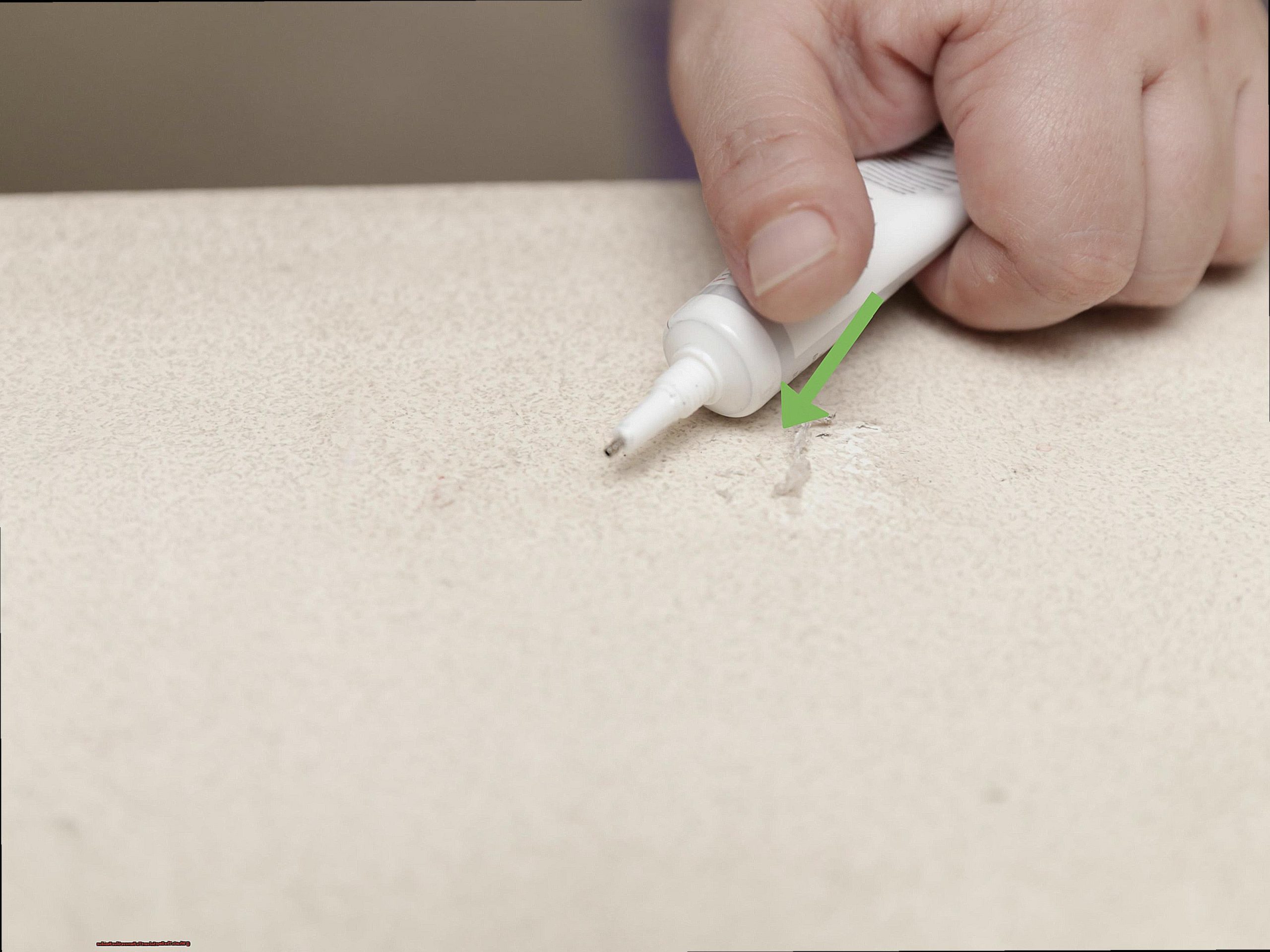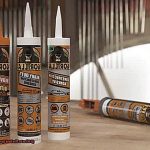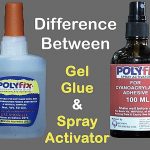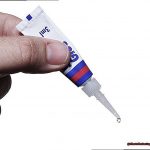Ever found yourself locked in a battle against those pesky remnants of glue left behind by stubborn stickers or labels? Whether they cling to your glass surfaces, clothes, or even your cherished mug, removing these persistent residues can be an infuriating challenge. But fear not, my friend. We’re about to embark on a thrilling quest to uncover the holy grail of adhesive solutions – the best solvent to obliterate glue residue.
Imagine this: you summon all your courage to peel off that unsightly sticker from your shiny new laptop, only to be confronted with a gooey aftermath that refuses to budge no matter what you try. What’s a frustrated soul to do? Well, worry not. In this blog post, we’ll take a deep dive into the captivating realm of solvents, revealing the magical chemicals that will transform your gluey nightmares into distant memories.
On our mission for spotless surfaces and lives free from sticky encounters, we’ll explore the most potent solvents for various materials – from everyday household items to delicate surfaces that require gentle handling. From the versatile power of acetone to the small but mighty isopropyl alcohol, we’ll unravel the secrets behind their mechanisms and discover why they work wonders on those infuriating glue residues.
But wait. There’s more. We’ll also venture into the world of natural solvents for those eco-conscious readers seeking a gentle yet effective approach. Brace yourself for mind-blowing revelations like how lemon juice, olive oil, and baking soda can perform miracles when it comes to tackling glue residues.
So gather ’round, my fellow warriors against adhesives. Join us on this enthralling journey as we unearth the best solvent capable of eradicating glue residue once and for all. Get ready to bid farewell to sticky remnants and restore the glory of your surfaces with an unparalleled sense of triumph.
Types of Glue Residues and Surfaces
Contents
Removing glue residues can be a challenging task, as different glues leave behind different residues that adhere differently to various surfaces. In this blog post, we will delve into the fascinating world of glue residues and explore how they can affect the removal process. By understanding the characteristics of different types of residues and surfaces, you’ll be equipped with the knowledge to choose the best solvent and technique for effective removal.
Tackling Water-Based Glue Residues:
Water-based glues, such as craft glue or school glue, are popular for their ease of use and non-toxicity. However, they can leave behind stubborn residues that require special attention. To remove water-based glue residue, start by dampening a cloth or sponge with warm water. Gently rub the affected area until the residue begins to dissolve. For more resistant residues, create a solution by mixing warm water with a few drops of dish soap and continue scrubbing until clean.
The Persistence of Solvent-Based Glue Residues:
Solvent-based glues, like super glue or epoxy adhesive, are known for their strong bonding properties. Consequently, they often leave behind hard and stubborn residues that require specific solvents for successful removal. Acetone or nail polish remover containing acetone is effective in tackling solvent-based glue residues. Apply a small amount to a cotton ball or cloth and gently rub the residue until it dissolves. Prioritize testing these solvents on a small area to ensure they don’t damage the surface.
Goo Gone: A Citrus Magic Solution:
Goo Gone is a commercial product that combines citrus oils and solvents to dissolve all types of sticky residues without harming most surfaces. Applying Goo Gone onto a cloth or sponge and gently rubbing the residue will make it disappear effortlessly. Available in liquid or gel form, Goo Gone is versatile and suitable for various glue residue challenges.
Harnessing the Power of Oils:
Household oils, such as vegetable oil or cooking oil, can surprisingly be effective in removing glue residues. Apply a small amount of oil to the affected area and let it sit for a few minutes. The oil helps loosen the adhesive bond, making it easier to wipe away the residue with a cloth or paper towel. This method is particularly useful for delicate surfaces like fabrics or upholstery.
The Heat-It-Up Hack:
In some instances, heat can be your secret weapon against stubborn glue residues. By using a hairdryer on low heat, warm up the residue until it softens. Then, use a cloth or paper towel to wipe away the softened glue. Take caution not to overheat or damage the surface, especially when dealing with sensitive materials like plastics.
Rubbing Alcohol as a Solvent
As we continue our quest for the ultimate solvent, we now unveil the enchanting properties of rubbing alcohol, a.k.a. isopropyl alcohol. This affordable and versatile elixir has earned its rightful place as a formidable foe against glue residue. So gather your cotton balls and embark on a journey to discover how rubbing alcohol can liberate you from the clutches of sticky remnants once and for all.
Meet Rubbing Alcohol: The Unyielding Nemesis of Glue
Rubbing alcohol, known by its alter ego isopropyl alcohol, is an indispensable ally found in countless households. This ubiquitous solvent has proven time and again its unrivaled ability to dissolve various adhesives, including the notorious glue residue. It boldly weakens the bonds that hold glue firmly in place, rendering its removal a swift and effortless task.
A Versatile Warrior: Conquering All Surfaces
Behold the marvel of rubbing alcohol’s versatility. Whether you’re grappling with glass, metal, plastic, or even delicate fabrics, this formidable solvent is ready to answer the call. However, caution is warranted. Before unleashing its power, test rubbing alcohol on a discreet area to ensure it won’t mar or discolor your cherished surface.
The Dance of Dissolution: Unraveling the Magic
Envision rubbing alcohol as a suave infiltrator stealthily penetrating enemy lines. Upon contact with glue residue, it deftly weakens the adhesive’s grip on the surface. By dismantling the bonds that unite the glue molecules, rubbing alcohol opens the gateway to effortless removal. It’s akin to witnessing an astute magician make glue residue vanish into thin air.
The Battle Plan: Wielding the Solvent
Now that we understand the secret behind rubbing alcohol’s sorcery, let us strategize our plan of attack. To employ rubbing alcohol as a solvent, arm yourself with a pristine cloth or a trusty cotton ball. Apply a small amount of rubbing alcohol onto the fabric and gently massage the affected area. Fellow warriors, patience is key, for it may require repeated applications to fully dissolve and vanquish the glue residue.
Acetone as a Solvent
We are about to embark on a journey into the extraordinary world of acetone, the ultimate superhero solvent that will effortlessly eradicate those sticky remnants and restore your surfaces to their former glory. So, grab your magnifying glass and let’s uncover the enchanting powers of acetone.
The Science Behind Acetone’s Superpowers:
Acetone is not your average solvent; it’s a clear, colorless liquid ninja capable of dissolving an extensive range of substances, including glue. But how does it work? Brace yourself for this mind-blowing fact: acetone has the uncanny ability to break down the chemical bonds that hold glue together. Imagine glue as a fortress built from various chemicals like polymers and adhesives, forming strong bonds to unite surfaces. Yet, acetone swoops in like a stealthy warrior, weakening those bonds and making it a breeze to wipe away the glue residue.
Non-Porous Surfaces: Acetone’s Playground:
When it comes to non-porous surfaces such as glass, metal, and ceramics, acetone truly shines. Its remarkable evaporation skills enable it to vanish without leaving behind any residue or unsightly stains. However, exercise caution with materials like plastic or painted surfaces, as acetone may cause damage. Always test it in an inconspicuous area before unleashing its superhero powers.
Unleashing the Power of Acetone:
Now that you’re armed with the knowledge that acetone is your secret weapon against glue residue, let’s dive into how you can effectively harness its power:
Step 1: Ventilate the Area:
Before embarking on your mission to combat glue residue, ensure you’re in a well-ventilated space or open some windows. Acetone possesses a potent odor that can be overwhelming, and safety always takes precedence.
Step 2: Applying Acetone:
Equip yourself with a clean cloth or cotton ball, saturating it with acetone. Gently rub the cloth or cotton ball over the stubborn glue residue, applying slight pressure. Allow acetone to work its magic, penetrating the adhesive for a few minutes.
Goo Gone as a Solvent
Look no further than Goo Gone, the ultimate adhesive remover. As a leading expert in the field, I am thrilled to unveil the remarkable powers of Goo Gone as a solvent. Get ready to be amazed as we explore the versatility, refreshing scent, and ease of use that make Goo Gone the superhero of adhesive removers.
Versatility: Conquering All Surfaces
Goo Gone is like a jack-of-all-trades when it comes to adhesive removal. From glass to metal, plastic to wood, there’s no surface that can resist its powers. Wherever sticky residue lurks, Goo Gone swoops in to save the day. It’s the ultimate sidekick for any sticky situation.
Citrus-Powered Freshness: A Breath of Fresh Air
Say goodbye to those overpowering solvent smells that leave you gasping for air. Goo Gone brings a refreshing twist with its delightful blend of citrus extracts. Using Goo Gone is not only effective but also a pleasant experience for your senses. Embrace the invigorating scent of citrus as you triumph over sticky foes.
Easy-Peasy Application: Effortless Victory
Goo Gone understands that battling sticky residue should be as easy as pie. To activate its superpowers, simply apply a small amount to the glue residue and let it work its magic for a few minutes. Armed with a trusty cloth or sponge, gently scrub away until every last trace of residue disappears. It’s so simple that even a sidekick could do it.
Safety First: Testing Before Triumph
As with any powerful tool, Goo Gone should be used with caution. Not all surfaces may appreciate its powers, so it’s crucial to test it on a small, inconspicuous area before taking on larger missions. As responsible superheroes, we prioritize safety above all else.
More Than Just Glue Removal: A Multifaceted Hero
Goo Gone isn’t limited to defeating glue residue alone. Its versatility extends to other sticky predicaments, such as removing tape residue, adhesive labels, and even stubborn wax. With Goo Gone by your side, no sticky substance stands a chance. It’s the ultimate hero for any sticky situation.
Vegetable Oil or Cooking Oil as a Solvent
All you need is a little secret weapon from your very own kitchen – vegetable oil or cooking oil. That’s right, these everyday household staples can work wonders as solvents.
So, how do vegetable oil and cooking oil work their magic on glue residue? It’s simple, really. These oils have the incredible ability to break down the adhesive properties of glue. When you apply just a small amount of oil to that sticky area and let it sit for a few minutes, it seeps into the glue, weakening its grip and making it a breeze to remove without causing any harm.
Using vegetable oil or cooking oil as a solvent is as easy as pie. Just take a moment to apply a small amount of oil directly onto the glue residue. Allow it to work its magic for a few minutes, letting it penetrate deep into the adhesive. Then, armed with a soft cloth or sponge, gently scrub away that softened glue. Repeat this process until every last bit of residue has vanished.
Now, before you go raiding your pantry for some oil, there are a couple of things you should know. Not all glues and surfaces are created equal, my friend. So, while vegetable oil or cooking oil can work wonders in most cases, it might not be the perfect solution for every situation. That’s why it’s always wise to test these oils on a small, inconspicuous area first. This way, you can ensure that they won’t cause any damage or discoloration.
Oh, and one more thing. For those particularly stubborn adhesives that refuse to budge, you may need to call in reinforcements – other solvents or techniques. But don’t worry. With a little bit of experimentation and a sprinkle of patience, you’ll be able to bid farewell to even the trickiest of glue residues.
So, the next time you find yourself in a sticky situation, there’s no need to panic. Just reach for that bottle of vegetable oil or cooking oil lurking in your kitchen and let it work its solvent magic. With its affordable price tag and easy accessibility, it’s like having your very own superhero sidekick.
Dish Soap Solution as a Solvent
Imagine a world where stubborn glue residue from stickers, tape, or labels is no longer a headache. Well, my friends, that world exists, and the key to unlocking its magic lies in your very own kitchen – dish soap solution. This humble household item possesses the incredible ability to dissolve glue residue effortlessly. Brace yourselves as we embark on an exhilarating journey into the realm of dish soap as a superhero solvent, ready to rescue us from sticky situations.
The Science Behind Dish Soap as a Solvent:
Before we dive into the practical applications, let’s unravel the secret weapon within dish soap – surfactants. These mighty warriors, concealed within this everyday item, possess the power to reduce water’s surface tension. This remarkable feat allows them to break down and dissolve substances like glue. Picture an army of glue-fighting agents, ready to triumph over any challenge that comes their way.
Using Dish Soap Solution as a Solvent:
Now that we comprehend the science behind it, let’s unleash the full potential of dish soap solution. Here’s a step-by-step guide on how to banish glue residue with ease:
- Dilute and Conquer: Harness the true power of dish soap by creating a mild solution. Mix approximately 1 part dish soap with 10 parts water, ensuring a gentle yet effective concoction.
- Apply and Wait: Directly apply the dish soap solution onto the persistent glue residue. Allow it to sit for a few minutes, granting the surfactants ample time to penetrate and soften the adhesive bonds.
- Gentle Scrubbing: Armed with a soft cloth or sponge, gently scrub the affected area. The harmonious combination of the dish soap solution and your tender touch will work wonders in loosening the glue’s grip.
- Rinse and Repeat: Once you’ve successfully loosened the adhesive, thoroughly rinse the area with clean water. This final step ensures a pristine and glue-free surface, devoid of any lingering soap residue.
The Limitations of Dish Soap as a Solvent:
While dish soap solution possesses formidable powers, it does have its limitations. Remember that it may not be as effective against stronger adhesives or if the glue has hardened over an extended period. In such cases, exploring alternative solvents or techniques becomes necessary to conquer these stubborn residues.
Heat to Remove Glue Residue
Heat can be a powerful ally when it comes to removing glue residue from various surfaces, and I’m about to show you how to wield this superhero solvent with precision and finesse.
Let’s dive right into the nitty-gritty of using heat to banish glue residue once and for all. Here’s what you’ll need and how to do it:
Get your trusty hairdryer – the kind that blows hot air, not just hot air itself (we’re looking at you, Uncle Bob’s puns). Set it to a medium or high heat setting, and get ready for some serious adhesive combat.
Hold that hairdryer about 6 inches away from the glue residue, and direct that stream of hot air right at it. The heat will work its magic by softening the glue and making it more pliable. It’s like giving the glue a warm hug and convincing it to let go of its stubborn grip on your precious surfaces.
As the glue heats up and starts to soften, grab a soft cloth or a plastic scraper (no metal tools here, my friend) and gently scrape off the softened residue. Remember, we’re aiming for liberation here, not destruction, so be careful not to apply too much pressure that might damage the surface you’re working on.
For those particularly stubborn spots of glue residue that just won’t budge, don’t lose hope. Keep applying heat until those pesky remnants surrender to your superior adhesive-fighting skills. With each blast of hot air, they’ll soften further and become easy pickings for your cloth or scraper.
However, it’s important to note that while heat is a formidable ally, it does have its limits. This method works best on smaller areas of glue residue and may not be suitable for larger or more stubborn adhesive remnants. And always remember, my dear reader, to test this method on a small inconspicuous area of the surface first. We wouldn’t want any unintended damage or discoloration spoiling your glue-free paradise.
Testing the Solvent on an Inconspicuous Area
We embark on a new quest: the crucial importance of testing a solvent on an inconspicuous area before vanquishing glue residue. So don your lab coats and prepare for an adventure in experimentation.
Why Testing is Paramount:
Before diving headfirst into battle against stubborn adhesive remnants, it is imperative to conduct a small-scale trial. By subjecting the solvent to an inconspicuous area, you can shield your precious materials from potential disasters and preserve their unblemished beauty. Consider it a secret handshake between you and your adhesive nemesis.
Choosing the Perfect Testing Ground:
In selecting your testing spot, choose stealth mode. Seek out an area that will not draw attention if unforeseen circumstances arise (which we fervently hope they won’t). Peer behind that towering bookshelf, delve inside that dusty drawer, or lift that long-ignored furniture piece – these covert locations are perfect for undercover operations.
Unleashing the Solvent:
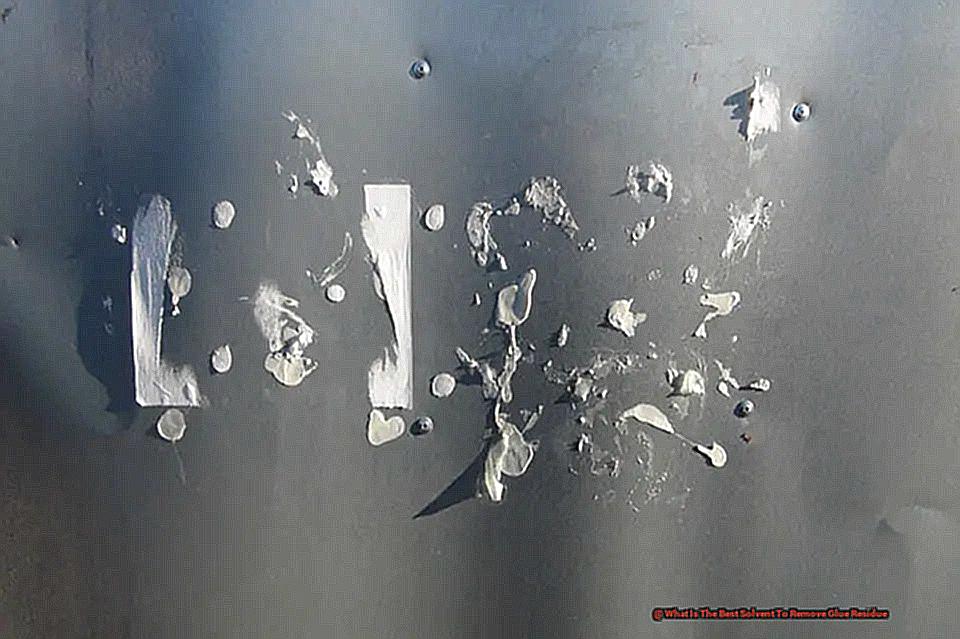
Upon discovering your clandestine testing ground, it is time to put the solvent to the ultimate examination. But hold your horses. Remember, in this case, less is more. Begin with a mere speck of the solvent and delicately apply it using a cotton swab or soft cloth. We aim not for a chemical tsunami, but rather a gentle touch to uncover the solution’s secrets.
Observation: The Key to Success:
Now comes the thrilling part – observing your material’s reaction to the solvent. Keep your keen eye peeled for immediate transformations such as discoloration, warping, or damage. If all remains as it should, congratulations. You have taken one giant stride towards banishing that pesky glue residue once and for all.

When the Tides Turn:
Alas, even the most meticulous plans may falter. Should you encounter any adverse effects on your cherished material, it is time to halt your mission and reassess your strategy. Different solvents may elicit diverse reactions from various materials, but do not despair. This is all part of the exhilarating trial and error process.
Conclusion
When it comes to getting rid of that stubborn glue residue, finding the best solvent is key. But fear not, for I am here to guide you towards the ultimate solution. So buckle up and prepare to bid farewell to those sticky remnants.
Now, let’s delve into the world of solvents. There are a plethora of options available, each with its own unique properties and capabilities. But which one reigns supreme? Well, my friend, it all depends on the type of glue you’re dealing with.
For water-based adhesives, a simple mixture of warm water and dish soap can work wonders. This gentle concoction will help break down the adhesive without causing any harm to your surfaces. Just grab a cloth or sponge, soak it in the solution, and gently rub away that pesky residue.
But if you’re dealing with stronger glues like epoxy or super glue, you’ll need something a bit more heavy-duty. Enter acetone. This powerful solvent is commonly found in nail polish removers and can swiftly dissolve even the toughest adhesive bonds. Just be sure to use it in a well-ventilated area and avoid contact with your skin.
Another option worth considering is rubbing alcohol. With its excellent dissolving properties, it can effectively tackle various types of glue residue. Simply apply some onto a cloth or cotton ball and gently scrub away until your surface is left gleaming.
And let’s not forget about good old-fashioned vinegar. This versatile household staple can also come to your rescue when battling glue residue. Mix equal parts vinegar and water, soak a cloth in the solution, and wipe away that sticky mess with ease.
In conclusion, there isn’t just one “best” solvent for removing glue residue – it all depends on the type of glue you’re dealing with. From warm soapy water to acetone, rubbing alcohol to vinegar, there are plenty of options at your disposal.

